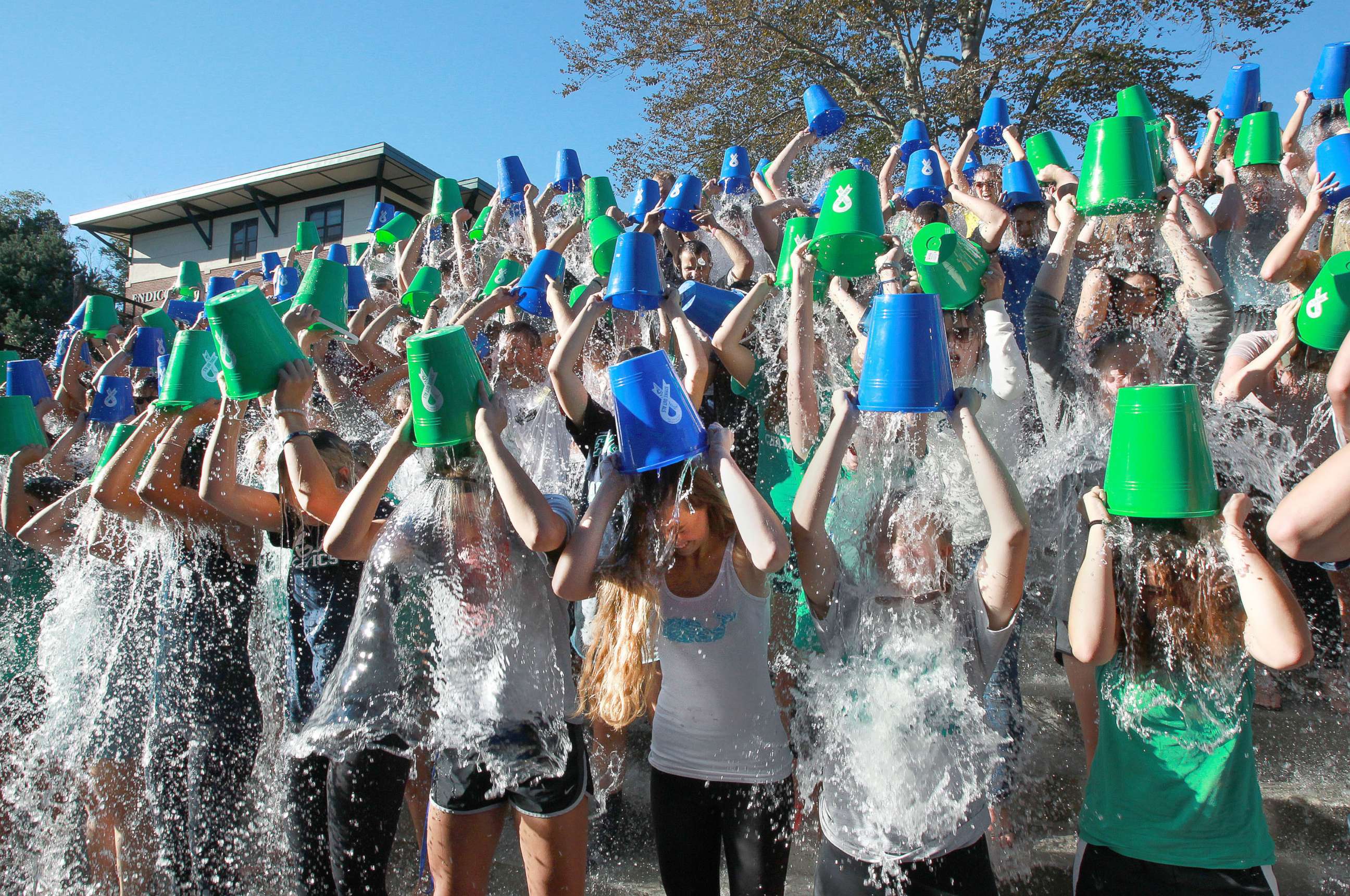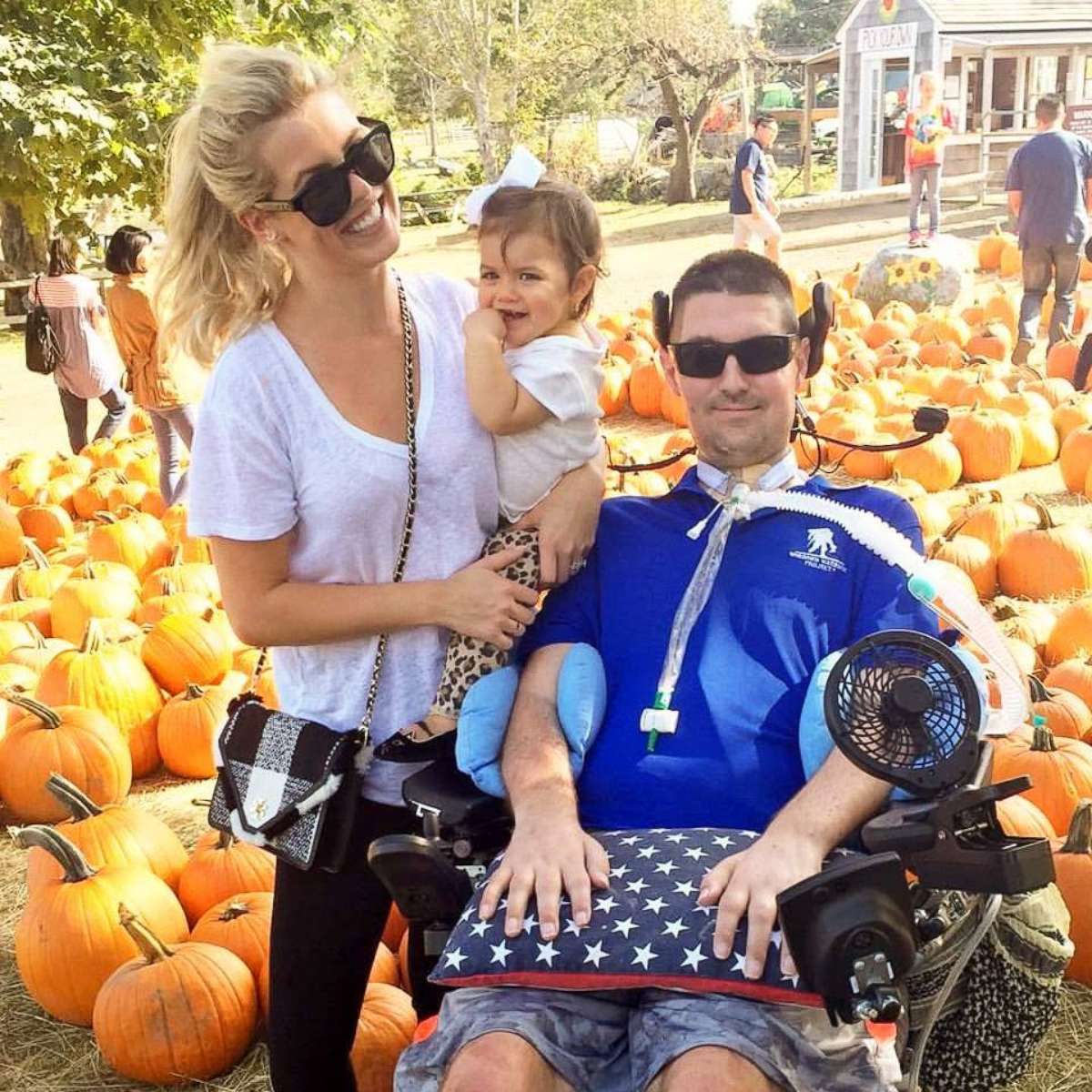What to know about ALS as the Ice Bucket Challenge turns 5 years old
Pete Frates, a former baseball player, started the viral challenge.
Five years ago, the Ice Bucket Challenge swept the internet — and beyond — raising awareness for the crippling disease amyotrophic lateral sclerosis (ALS).
The challenge was simple: record a video of yourself pouring an ice-cold bucket of water over your head and/or donate money to charities that fight ALS, and then nominate friends to do the same thing. In only a few weeks, millions of people — including Oprah Winfrey, Lebron James and Bill Gates — had participated in the challenge and nearly $220 million had been raised to fund ALS research.
Pete Frates, a former baseball player for Boston College who had been diagnosed with ALS after returning from a brief stint playing professionally overseas, didn't start the challenge but he helped it go viral.
Frates was called out to participate in the challenge by a friend, and through his own vast network of friends — many of whom are professional athletes — the challenge managed to take off. Julian Edelman, wide receiver for the New England Patriots, was among those nominated by Frates.

ALS is commonly called Lou Gehrig’s disease after the star New York Yankees player who died from the disease at the age of 37, in 1941.
Here is more information about the disease.
What is ALS?
ALS is a disease that damages the nerve cells that control muscles. The exact cause of ALS is unknown and remains an active area of research.
There are two main forms of ALS: familial, when there is a known history of ALS occurring in the family, and sporadic, when there is no known family history. Researchers have found a number of inherited factors that can lead to familial ALS.

What are the symptoms of ALS?
Over time, this nerve cell damage causes the cells to die. The main symptoms include weak arm or leg muscles, muscle twitches and slowness, and difficulty with speech and swallowing.
As the nerve cells lose function and the muscles become weaker, the muscles eventually stop working and paralysis follows. The brain is entirely unaffected; Stephen Hawking continued to be a brilliant physicist, even with later stages of the disease. The main cause of death in people with ALS is when the muscles that help with breathing become paralyzed.
Who gets ALS?
In the United States, an estimated 5,000 people a year are diagnosed with ALS, and they are usually between the ages of 55 and 75. There are reports that up to 30,000 people are affected now. ALS occurs more commonly in men than women.
How is ALS diagnosed?
ALS can be diagnosed based on symptoms that continue to progress. One test, an electromyography, or EMG, can measure how well the nerve and muscle cells work. An MRI scan can also see pictures of the brain and spinal cord to look for evidence of the disease. Blood tests and spinal tap studies can also be done to rule out an alternate diagnosis.
What are the treatments for ALS?
While there is no cure for ALS, treatments exist to help minimize the symptoms. Medications called riluzole or edaravone work by slowing down the progression of the disease, often helping people live a few months longer.
Other medications used include ones to help with twitches and muscle spasms, muscle weakness, drooling and sleep problems. Many patients eventually require help with walking, eventually needing a wheelchair, a feeding tube because of difficulty swallowing and breathing support.

How long can people live with ALS?
Many people diagnosed with ALS are older than 50 and the life exectancy is about three to five years following the diagnosis. However, some patients diagnosed as teenagers were shown to survive into their 60s.
Research supports that the earlier the diagnosis of ALS, the longer patients tend to live.
ABC News' Bianca Seidman contributed to this report.
Dr. Hector M. Florimon is a third-year resident in pediatrics at New York Presbyterian-Columbia University Medical Center, working in the ABC News Medical Unit.




